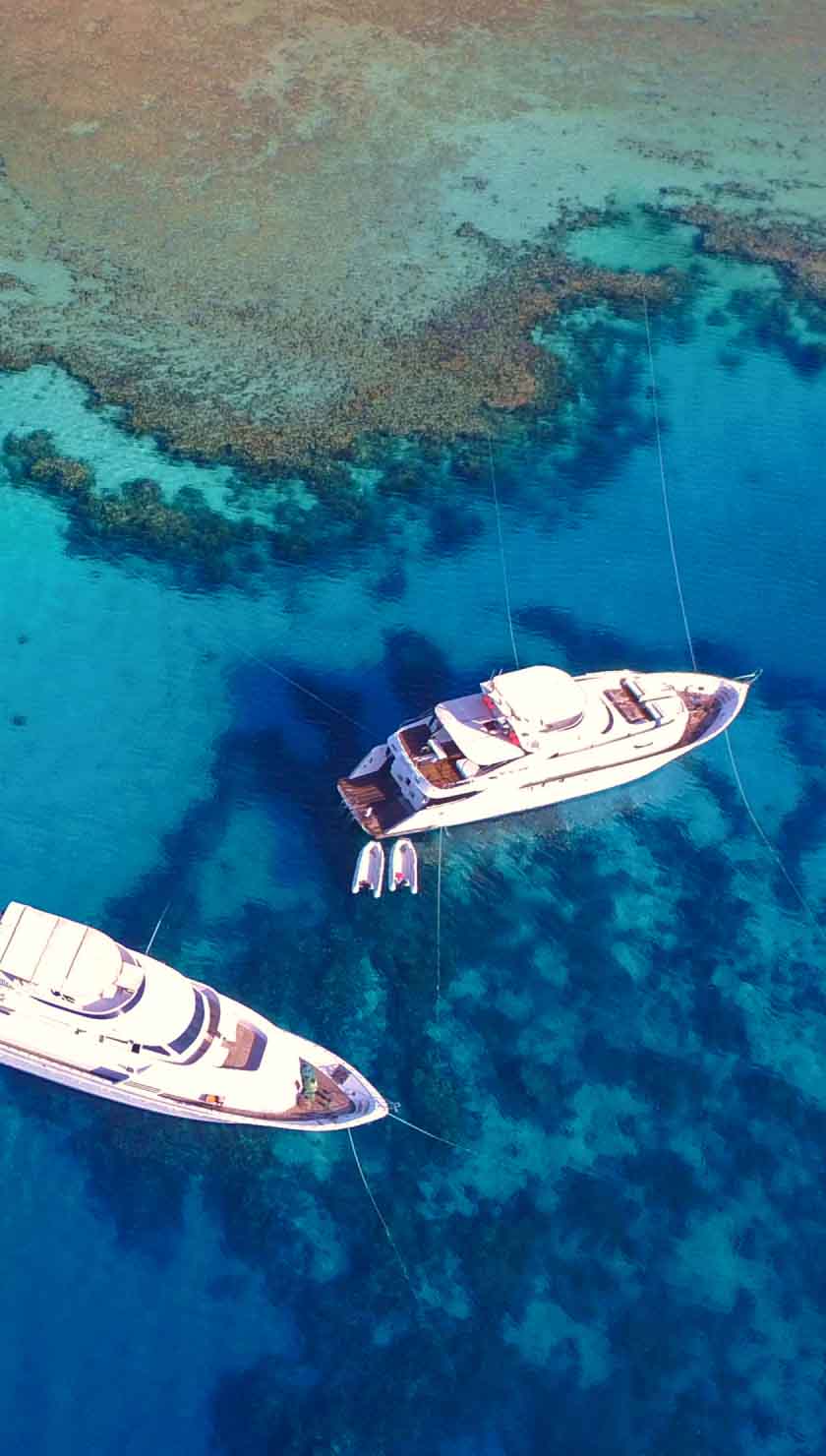Liveaboard Diving in Cabo (Cape) Douglas
What to expect on a Cabo Douglas Liveaboard
Cabo (Cape) Douglas dive site is located on the North West side of Fernandina Island. One of the central Galapagos islands, Fernandina has an active shield volcano 'La Cumbre', which has been subject to eruptions within the last ten years. The most recent volcanic eruption was in 2009. The upsurge and lava flows were witnessed by a group of tourists and national park guides from a boat trip nearby. There are no people living on Fernandina but the eruptions and lava flows have threatened the unique species living here.
Fernandina is one of the most unspoiled environments in the world and one of the few places in the Galapagos which has never suffered any kind of invasive species. Many of the animals on Fernandina exist only on the Galapagos Islands. Flightless cormorants have a nesting site here. These amazing birds evolved to live on this barren island by learning to swim and hunt underwater, instead of flying, due to the lack of land predators.
Marine iguanas have also evolved to survive on these islands making them completely distinctive to the region. The island is also home to a great number of sea lions, turtles, pelicans and Galapagos penguins. The dive sites at Cabo Douglas don’t cover a very large area but it holds the opportunity to see so many rare species that it is thrilling diving.
Daily Schedule
Morning
The dives will start early at Cabo Douglas around 6-6.30 AM with a light breakfast and a coffee. Your guide will give a briefing on the two dive sites at Cabo Douglas and the very unusual wildlife you will encounter here. Different animals are in different areas of the site so listen carefully so you don’t miss any details.
Then it is straight to the dive deck to gear up, photographers might want to take a variety of lenses for this one, as the depth and light changes a lot from one area to another. Divers will be dropped by panga tenders at the dive sites, make sure to stay orientated because you may have to swim in to get to the reef. The dives are normally around 50-60 minutes depending on how long you spend at depth.
Afternoon
After a proper breakfast you will make the second dive further down the coast but still within the bay area. This is a chance to see any of the creatures you might have missed in the first dive. Cabo Douglas has a rich variety so although the sites are close together, the two dives will feel completely different. If you spent the first dive at the deeper end with the red lipped batfish and sea horses, you will likely head closer to the shore waiting for visitors from the shoreline. After the second dive the boat will most likely up anchor and head to another site such as Punta Vicente for the next dives. This will give you a much needed long surface interval in the afternoon.
Cabo Douglas Underwater
All dives in Galapagos are pretty special with schools of sharks and thrilling aquatic displays. Cabo Douglas on the other hand is special in a very different way. You are not likely to see big pelagics here, but you will be able to encounter a number of the animals you cannot see anywhere else in the world. This is a place that will leave you entranced by the brilliance and resourcefulness of nature itself.
The dive sites are around a maximum 33 meters/110 ft and down in the deeper sections you can find red lipped batfish and sea horses aplenty. These make for exceptional photography subjects especially as the visibility is slightly better away from the shore.
In shallower waters around 5-10 meters/ 16-30 ft you can dive with the fascinating marine iguanas. These are the only diving iguanas in the world and can hold their breath for more than 10 minutes. They move with surprising grace and are surprisingly prehistoric in appearance. Flightless cormorants and penguins are also frequently encountered closer to shore. These flightless birds are surprisingly adept in the water and happy to flap around divers while searching for food.
Top Tips for Cabo Douglas
- Be sure to follow the guide carefully as the site has many different sections with different wildlife. You wouldn’t want to miss out on anything.
- Take your SMB, this area is popular with day boats for snorkelling and you will have to swim away from the rocks to be picked up.
- The water is a lot colder here than in Darwin and Wolf so if you come directly from there don’t forget to wear extra thermal protection.
- Wear your gloves. The current is negligible but close to shore, where the iguanas are, is very high swell.
Getting to Cabo Douglas
Cabo Douglas is in the main archipelago close to Isabella Island making it a few hours’ sail from many of the other central dive sites and an overnight sail from Darwin and Wolf. The west of Fernandina where Cabo Douglas is located, the coastline is quite exposed to the open ocean which can make it a bumpy journey if conditions are rough. The dive sites are nestled in a wide bay and access is by panga tender only. The swell and rocky coastline will mean you may need to swim out a little to get to and from the tenders which will then take you back to your Galapagos liveaboard.











